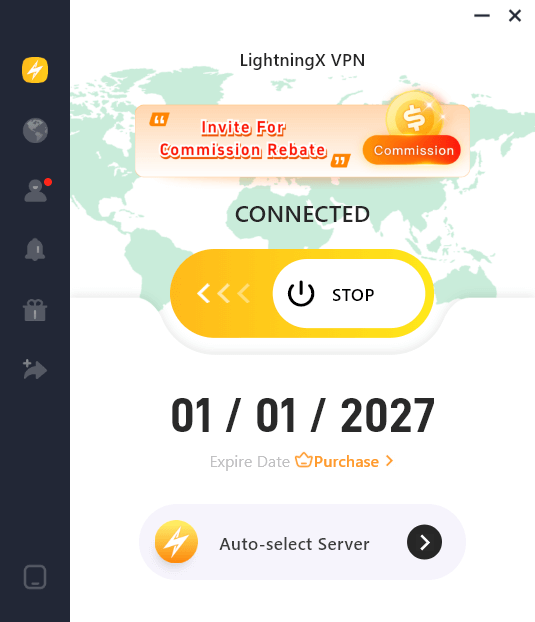Email is one of the most common tools we use every day. Emails allow us to communicate rapidly, whether for personal or professional purposes. However, have you ever wondered how these messages are retrieved and displayed on your device? The answer generally involves IMAP. You can better manage your mailbox if you understand it.
We’ll go over what IMAP is, how it functions, its advantages, and how it stacks up against other email protocols in this post. We’ll also provide helpful setup advice. You’ll understand how IMAP enhances your email experience by the end.
What Is IMAP?
Internet Message Access Protocol is referred to as IMAP. Email applications like Outlook, Apple Mail, and Gmail use this standard protocol to get messages from a mail server. With IMAP, your emails remain on the server, unlike with previous protocols. This implies that you may access and handle the same messages on several devices, such as your tablet, laptop, and phone.
IMAP enables you to, in brief:
- Access emails from different devices.
- Maintain real-time message synchronization.
- Store emails safely on the server instead of just your computer.
How Does IMAP Work?
IMAP establishes a connection to the mail server when you open your inbox using an email client. It just retrieves the information that is required, such as subject lines or previews, rather than downloading the complete message.
This enables you to:
- Check emails quickly without downloading all of them.
- When necessary, open whole messages or attachments.
- Keep everything online while conserving space on your local device.
IMAP essentially replicates your mailbox on the server. Every action you perform, including reading, deleting, or relocating emails, is instantaneously updated on all of your devices.
Further Reading: How to Delete All Emails on Gmail? (Desktop & Mobile Guide)
Why Is IMAP Important?
IMAP is important since it simplifies email management. The following are some main reasons:
Synchronization: Your inbox appears the same wherever you log in. Everywhere, read emails remain tagged as read. Deleted texts disappear from every device.
Convenience: IMAP is essential if you use several devices daily. Just because you’re not using your primary computer doesn’t mean you have to worry about missing emails.
Storage on Servers: If your device crashes, you won’t lose emails because they stay on the server. An additional degree of security is added by the majority of providers’ backups.
Remote Access: You may view your most recent inbox quickly by logging in from any device or location. Ideal for distant work or travel.
Advantages of IMAP
Let’s examine the primary benefits of utilizing IMAP:
1. Access from Anywhere
From any device, you can access your inbox. The same thing happens on all platforms.
2. Security of Data
Server-stored emails are typically backed up. Data loss is less likely as a result.
3. Conserving Space
Emails don’t overload your device with heavy attachments because they remain online.
4. Effective Structure
Labels and folders can be made on one device, and they will automatically show up on all other devices.
5. More Effective for Teamwork
IMAP is advantageous for teams that share inboxes since all changes take effect immediately.
IMAP vs. POP3: What’s the Difference?
Many people confuse IMAP with POP3, another email protocol. This is how they are different:
POP3 (Post Office Protocol 3):
- Downloads emails to your device.
- Deletes them from the server by default.
- Emails are stored locally, not synced.
- Works well if you use one device only.
IMAP:
- Keeps all emails on the server.
- Syncs across multiple devices.
- Ideal for people who need flexibility.
In summary, POP3 might be useful if you require easy access from a single machine. However, IMAP is a better choice if you require synchronization and flexibility.
How to Set Up IMAP?
Setting up IMAP is simple. Most email providers, such as Gmail, Yahoo, and Outlook, support it. Here’s a basic guide:
- Open your email client (e.g., Outlook, Apple Mail, or Thunderbird).
- Choose Add Account.
- Enter your email address and password.
- Select IMAP as the incoming mail protocol.
- Use the correct server settings (usually found on your provider’s help page).
- Save and sync.
Once complete, your inbox will begin syncing with the mail server.
IMAP Security Considerations
IMAP poses security hazards if not used properly, just like any other online technology. Here are some safety tips:
- Turn on SSL/TLS encryption to safeguard your information.
- Make use of secure passwords and update them frequently.
- For added security, turn on 2FA(two-factor authentication).
- When accessing important accounts, stay off public Wi-Fi.
IMAP is still a dependable and safe option with these precautions.
Want to make your IMAP email more secure? Beyond standard settings, choosing a high-quality VPN product delivers end-to-end encryption, anti-tracking, and Wi-Fi protection – elevating both your email and browsing experience.

LightningX VPN is your top choice. Connect with a single click and activate robust privacy protection. It employs robust encryption algorithms such as AES-256-GCM and ChaCha20-Poly1305 to ensure data cannot be intercepted or deciphered during transmission, safeguarding your email data and private information at all times. Download now to unlock a free trial and enjoy a 30-day money-back guarantee.
Related Post: What Is 2-Factor Authentication(2FA)? Security Defender
When Not to Use IMAP?
Despite its strength, IMAP might not be suitable for all situations:
- Limited Server Space: Keeping everything online may be problematic if your email provider provides very little storage.
- Single Device Use: POP3 may be easier to use if you only use one computer to check your email.
- Slow Internet Connections: IMAP functions best with steady connections because it syncs in real time.
Final Thoughts
Now you know what IMAP is and why it matters. It’s a convenient, safe, and adaptable protocol for handling email on several devices. It has definite advantages over POP3 in terms of convenience, storage security, and synchronization. IMAP is the best option if you want your email experience to be more seamless, secure, and linked.



















